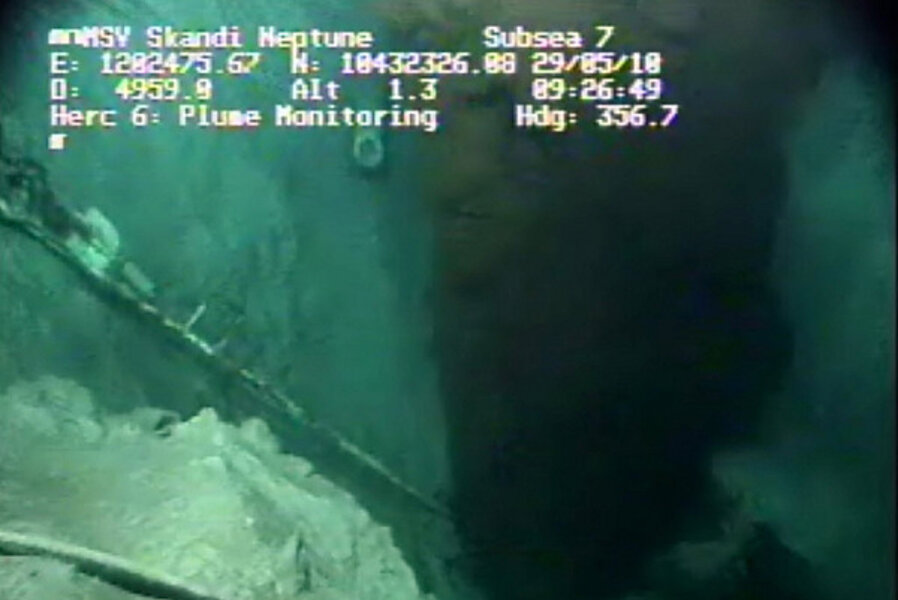BP 'top kill' live feed makes stars out of disaster bots
Loading...
| Atlanta
The BP live video feed of the oil giant's attempt to squash the runaway Deepwater Horizon well with a "top kill" maneuver using mud and golf balls has become an Internet smash.
Over one million people have viewed the video embedded in the PBS website, and at least 3,000 websites are using the feed. The glimpse into the deep has proved mesmerizing, a first-hand look at a "historic moment," as Indianapolis web designer Jeb Banner told the Associated Press.
But it also became clear Friday why BP originally wanted to stop the live feed during the top kill procedure, a move that was rebuffed by the White House. In a note to reporters, a BP spokesman noted that information on the "top kill" effort is now deemed "stock market sensitive." So far, scientists viewing the video are mixed on the effect of the gambit. BP's stock price sank 5 percent overnight.
BP said Friday it has twice since Wednesday turned off the spigot of heavy mud into the failed blow-out preventer at the wellhead to measure pressures and recalibrate the effort. Scientists say those moves could explain the changing shade of the plume. BP executives say it could be Sunday before they have any indication of success or failure.
(In related news, BP on Friday halted the deployment of a second relief well operation in order to focus on their next plan – placing an operable blow-out preventer on top of the one that failed on April 20 when the Deepwater rig first exploded.)
The BP live top kill feed shows alternate shots of the scene at 5,000 feet at the site where the Deepwater Horizon rig exploded and sank on April 22. With perhaps as much as 20 million gallons of oil already escaped, sludgy waves and tar balls are already hitting Louisiana marshlands and beaches.
Clear shots of plumes of mud and oil spewing from the faulty blow out preventer 5,000 feet below the Gulf of Mexico are mixed in with images of deep-sea ROV robots wielding wrenches, the mechanical extensions of BP engineers and government scientists housed in a sort of Apollo 13 war room in Houston.
Tony Wood, director of the National Spill Control School at Texas A&M University in Corpus Christi, told the AP that viewers can get a clue as to who is winning the battle of the deep. If the plume is jet black or whitish, it's either oil or gas escaping – bad news for BP.
If the plume is muddy brown, as it was Saturday morning, it means pumped mud is entering the blow-out preventer – a good sign. The goal is to push the mud deep into the damaged well to stop the flow of oil. Once that's done, the mud will be chased by cement to cap the well.
Meanwhile, the action on the bottom of the Gulf is heating up.
"There have been at least two and possibly as many as four times [Friday] that there has been something that looks like an explosion, and debris rains around, and for a while the ROV cameras go and look at something else (right now it is the riser outflow that we haven't seen for a while)," writes blogger "Heading Out" on the The Oil Drum blog, where armchair explorers and professional geologists are liveblogging the drama.
And from later Saturday morning, Crankbait reports: "Uhhh Folks... that's not mud. That's oil. And rather a lot of it. That means there's no mud downhole. Does it not? And it was blowing great big chunks of rubber... into the OIL plume ... 15 minutes ago. Not good."
Related:
The BP 'top kill' live feed: The armchair explorer's guide
Gulf oil spill: BP says 'top kill' taking longer than planned





